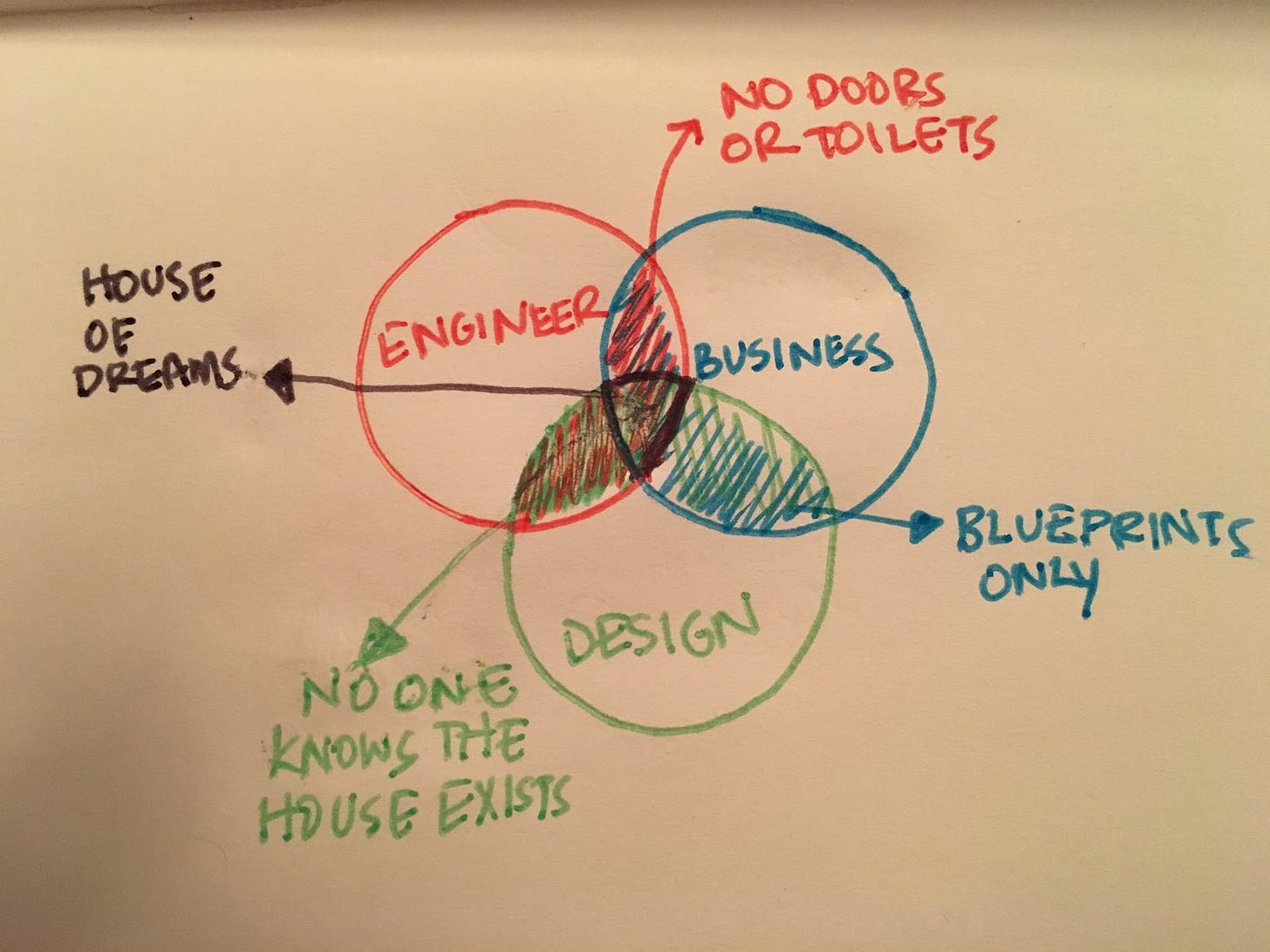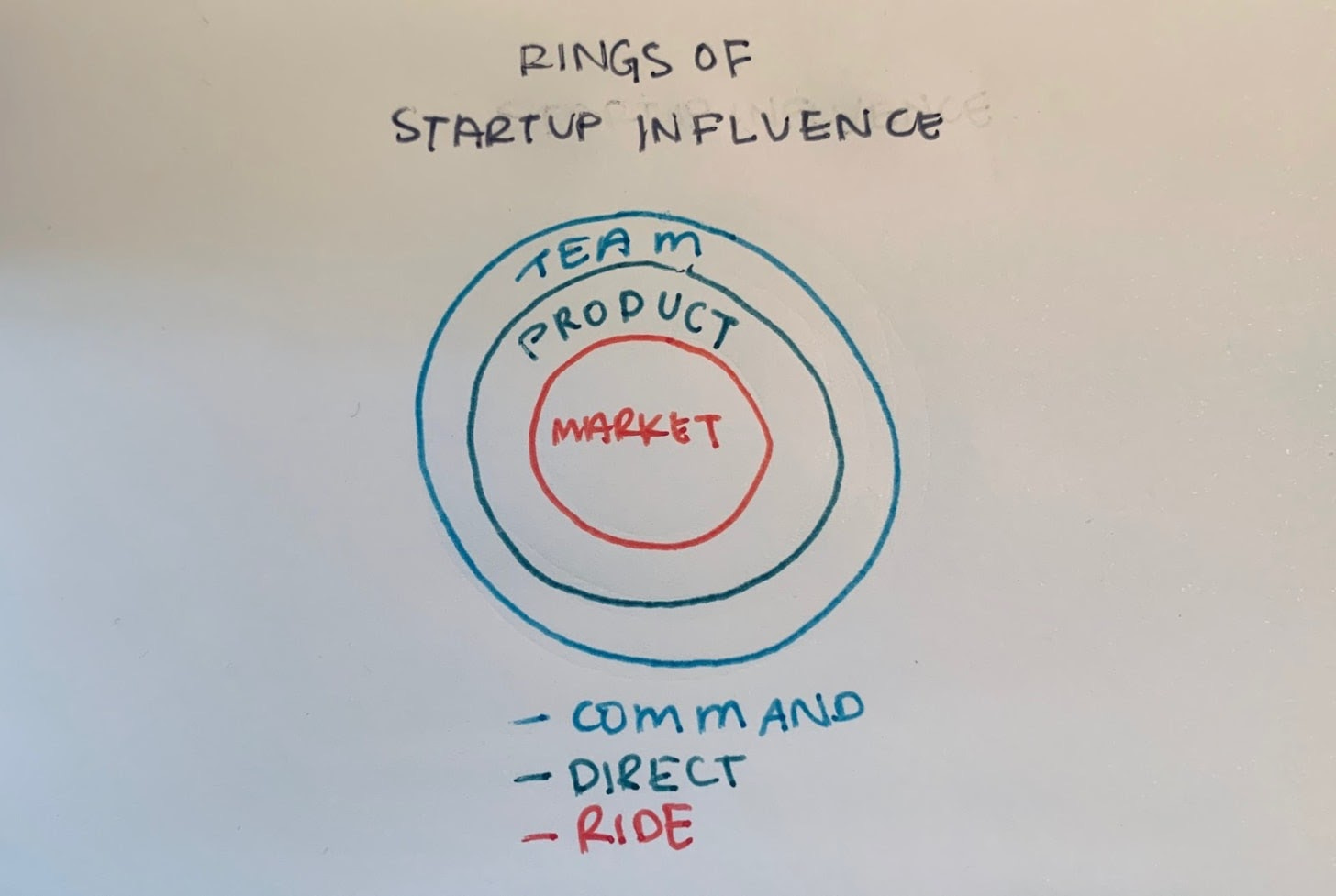If any of you have been cast in a play, “Places, people!” is the call for everyone to get ready and into position. This phrase has no meaning if you do not know your place and what you are supposed to do. This is also true during life phases. If you do not know your purpose is or what you are supposed to do, you will be set adrift.
A whole team can be set adrift if they do not know the direction of the startup or if the individuals do not know their purpose, roles and expectations within the team. This can be especially acute within a founding team, which I refer to as the rowboat phase.
This phase starts with the founding team and extends through the team of employees of the company in the early stages, up to around 80 people. I call this the rowboat phase because within a rowboat, it is up to those in the boat to control the destination of the “vessel”. Each bib and bob of the waves is felt. Each person needs to do their part to move in the right direction.
No startup wins during the rowboat phase, but many will die in this phase.
The founding and early team is likely stacked with generalists, but each should own a role and responsibilities associated with that role. Larger rowboats as in crew have designated roles – the coxswain, the bowmen, the stroke, etc.., and all work in the same direction.
A co-founder is not a role.
When starting a tech company, many folks recommend a co-founder. The journey is arduous and long. It takes about 7-10 years to build a company of great value and likely will have many near deaths. You will go a lot further with a co-founder.
I recommend you find co-founders with complementary skill sets, but more importantly find people who are willing and capable of performing complementary roles. I have written talked about this example before, but I think it bears repeating here:
One day Engineering and Design were having a conversation. Engineering says : “I don’t need anyone, I can build the whole house myself. I am most important.” Design says: “What good is building a house if people don’t even know how to use the doors or toilets?” Business then butts into their conversation, and says: “You are both silly, who would ever come and visit your house if they don’t know you exist? It’s like building a house with no address.” At that point Business, Design and Engineering realized they all needed each other. (This is based on an actual on-going debate we had among the founders.)
If you want to go fast, go alone. If you want to go far, go together. (African Proverb)

How to Operate in the Rowboat Phase
Within the founding stages, it is important to figure out how to operate. You are your own boss, no one will tell you how or where to navigate.
We approached the company with tasks to be done that fell into large buckets of product, engineering and business. Each founder then took ownership. The job of engineering was split between two founders: back end and front end. Each person owned their respective part, received feedback from other teammates and had the final say on the area that they owned. [a] For roles and activities that are not engineering such as product or fundraising, there was a keen interest from those owners to hear what the other founders had to say especially at points of review, but the ultimate choice lied upon that owner. [b]
This is what worked for us. There are as many variations of how to operate as there are families. You should figure out how to operate with your team. I have even seen some founding teams that are all engineers; however, some did jobs and took roles that were non-engineering because you need several roles within a founding team.
A successful founding team will need to learn how to operate together well.
As the team gets larger, it gets more complicated mainly because there are more people to try and direct. Also, the jobs to be done are abstract and get specialized. I knew we were getting big when we had to hire dedicated Project Managers (PJMs) for a product led company. Furthermore, the founding team becomes more removed from each other and they stop working together as an atomic unit. This means that if a founding team has learned how to operate well together in its beginning stages, as they scale, the founders will be better able to run their respective organizations as a unit, even though they are not as close in proximity.
Culture in the Rowboat Phase
Many may feel that writing down values at this stage may be too soon, especially when you are trying to find product market fit. Since there aren’t that many people, long hours, everyone likely brings their full self to work – warts and all. That is why in this phase a lot of people call their culture a “family”. This phase has your full range of characters that only a family could have. Also for a group that is small, culture is easily caught, not taught.
Even coming up with a mission and vision seem difficult and lofty because you are just trying to survive.
Mission and Vision answer what is the purpose
Strategy answers how to get there
Values answer the how we treat one another along the way
For this article, I’ll focus on the values at the rowboat phase. I recommend asking these questions to each team member to save you some time as you figure out how to operate. As a bonus, it will give you a head start on figuring out the values you care about:
What kind of place do I want to work at? How would I like to be treated? How would I like to treat others? [c]
What behaviors do we want to reward?
How do I want to resolve conflict?
What are the ground rules for making decisions?
If I am in conflict with someone, how do we want to resolve it (e.g. discuss directly to the person)?
I know talking about team and people so early may not sound important because it is not urgent; the team is focused on finding product market fit. But, if out of the Startup Rings of Influence this is what you have the most direct influence over, don’t you want to do the best job possible to give the team a fighting chance?

The answers to these questions can easily be the seed of your value statements which will drive behaviors. For example if the team values open and direct communication, this could lead to open office hours from the leaders or an open calendar.
Once you know the roles that the people play it’s important to know what to expect from one another. These cultural questions enable you to clarify expectations early on. Once you know what to expect from one another, answering these questions together can hold everyone accountable.
Furthermore, I will let you in on a secret. By answering these questions early, it will help you scale and move faster as the company grows. [d]
It’s one thing to get the right people on board, but it’s another thing to operate well together. Knowing each other's roles and setting clear expectations from one another enables each member to know their places.
So, when the team hears “Places, People!”, the rowboat will go forward as quickly as possible.
P.S. Happy Valentine’s Day - make sure you give your co-founder a hug, you each deserve it! ❤️
Get articles like these directly in your inbox, I promise to be kind 😍!
Notes:
[a] As we grew larger, there were disagreements to which can be resolved based on how we wanted to create our culture.
[b] Engineering is an exception because rarely does someone who does not have engineering experience will have strong opinions about the tech stack or other tech decisions; however, many people regardless of expertise will have an opinion on product or business.
[c] Replace “I” with each team member.
[d] Values may and usually evolve over time, but the seed from the early team gets baked into its culture. We saw our values evolve as we grew, but the seed stayed very much the same.

